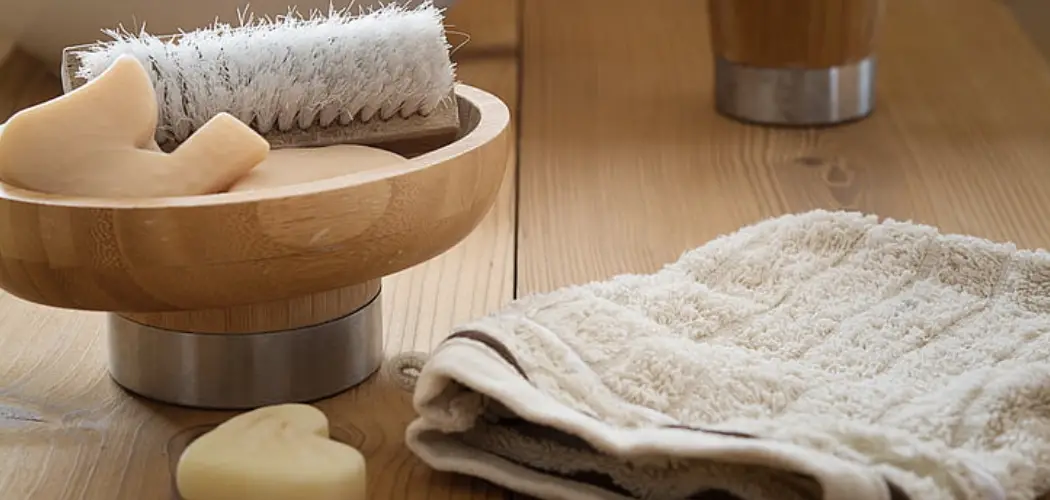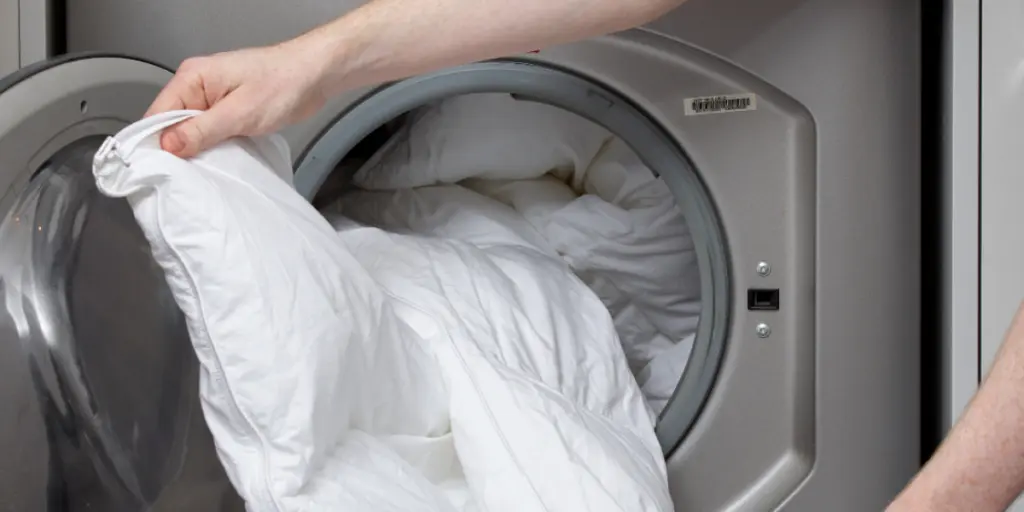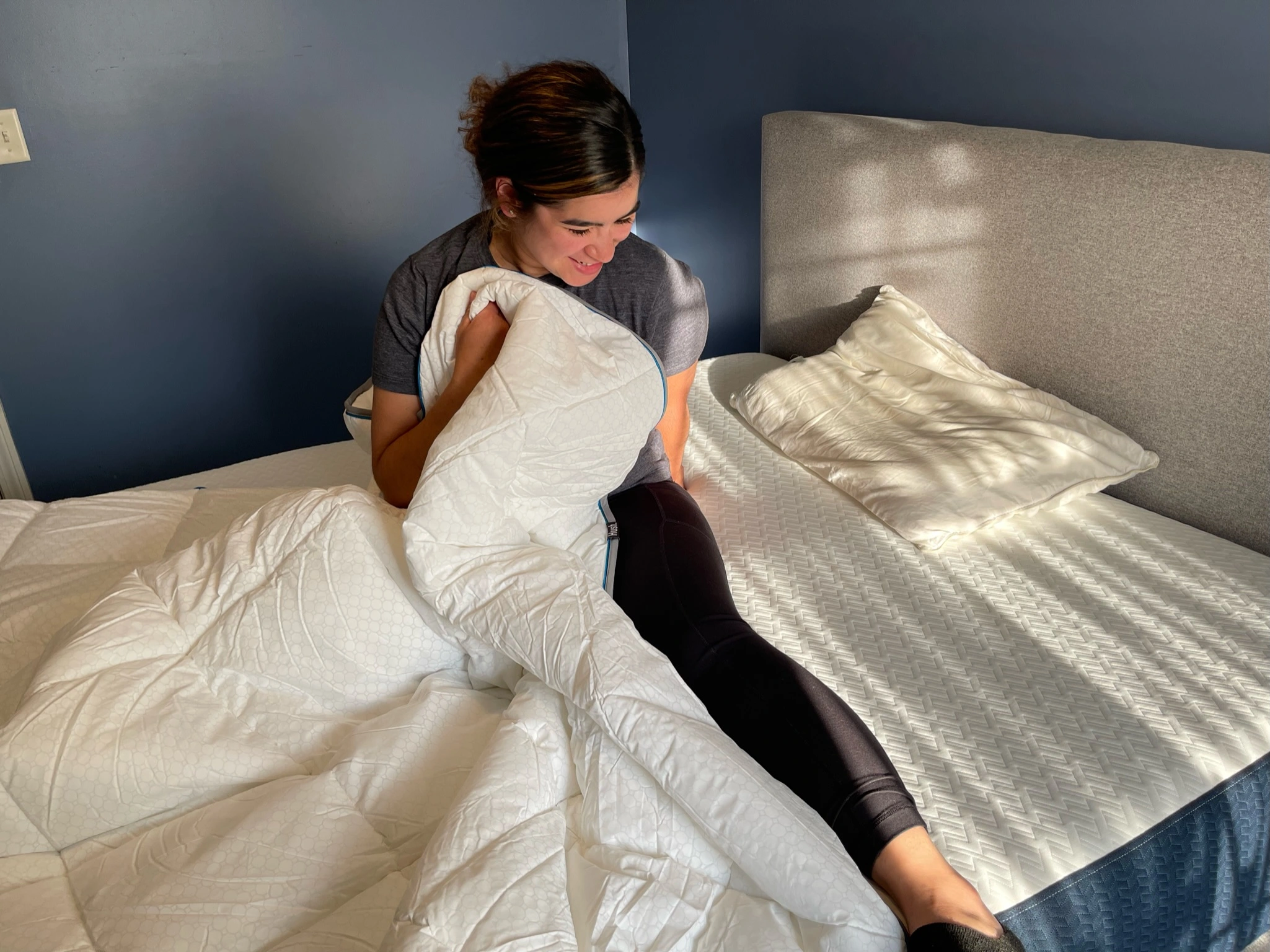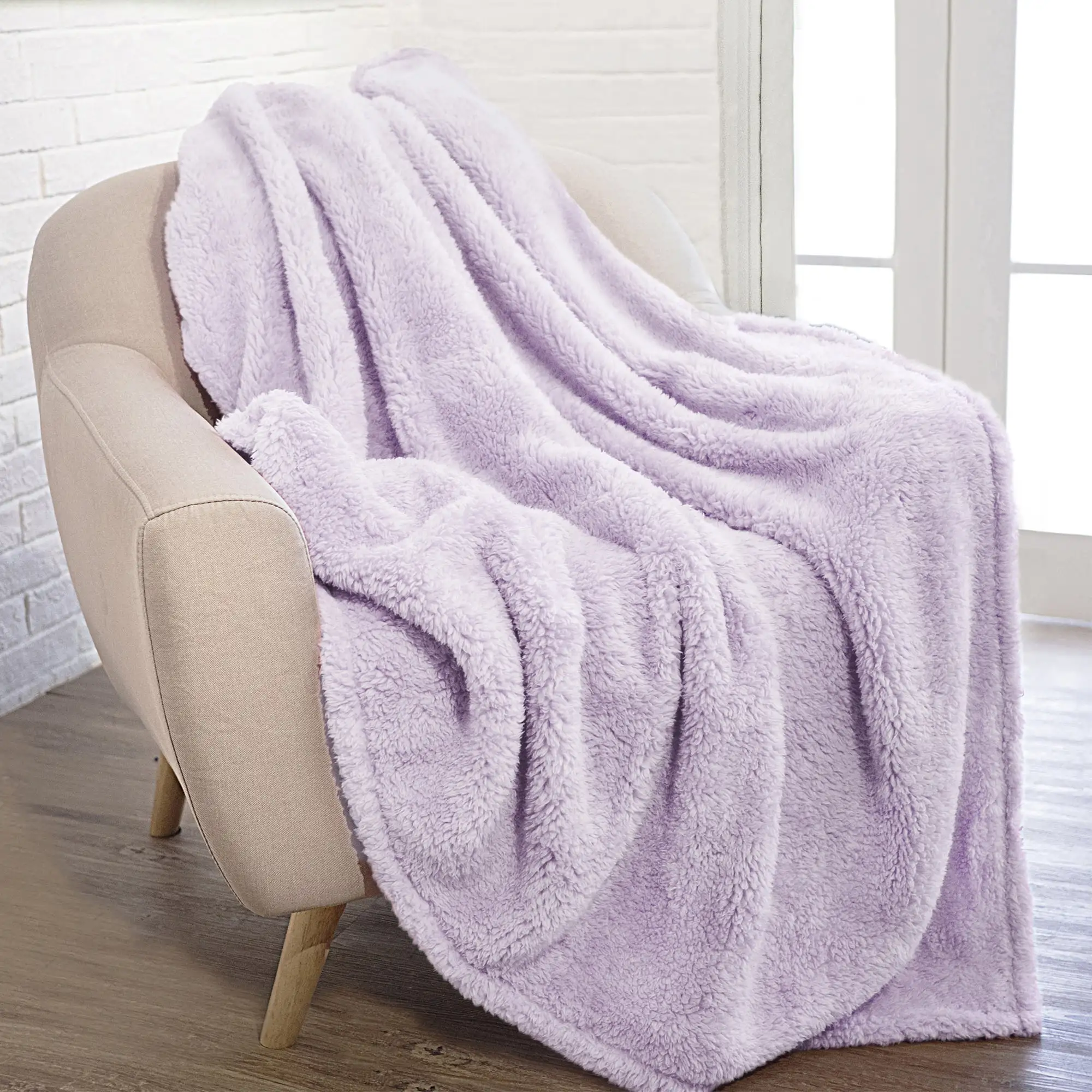With a few simple tricks and some household items, you can easily revive your beloved blanket and make it as fluffy as the day you first brought it home.
In this article, we will go through all the tips, tricks, and steps you need to bring your blanket back to its best form.
Why Blankets Lose Loft
- Frequent Use: Regular use of blankets can compress the fibers, reducing their loftiness over time.
- Washing and Drying: Improper washing and drying methods, such as using hot water or high heat in the dryer, can cause the fibers to clump together and lose their loft.
- Age: As blankets age, the fibers can break down and lose their ability to retain loft.
- Quality of Material: Low-quality materials may lose their loft more quickly than higher-quality materials due to inferior construction and materials.
Importance of having A Fluffy Blanket
- Improved Sleep Quality: A soft blanket provides comfort and coziness, creating the ideal environment for a good night's sleep. The blanket's soft texture and gentle weight can help promote relaxation, reduce tossing and turning, and contribute to deeper, more restful sleep.
- Stress Relief: Wrapping yourself in a fluffy blanket can have a calming effect on the mind and body. The gentle pressure and warmth from the blanket can help alleviate stress and anxiety, providing a soothing sensation that promotes relaxation and reduces tension.
- Sense of Security: A fluffy blanket can evoke feelings of security and comfort, similar to the soothing embrace of a hug. This can be especially beneficial during times of unease or uncertainty, as the blanket provides a reassuring cocoon that helps create a safe and secure space.
- Mood Booster: The softness and warmth of a fluffy blanket can have a positive impact on mood. Whether you're lounging on the couch or winding down with a fluffy throw for the night, the tactile comfort of the blanket can elicit feelings of contentment and relaxation, serving as a simple yet effective mood booster.
Methods for Fluffing Blankets
Sunlight
Before attempting any method, it's important to check the care instructions of the blanket. If the care instructions allow it, one method for fluffing blankets is to hang them outside in direct sunlight. The sunlight can help freshen up the fibers and revitalize the blanket, making it feel fluffier and more comfortable.
The Tennis Ball Trick
If the care instructions permit, an effective method for having a fuzzy blanket is to place it in the dryer with a couple of clean tennis balls. As the dryer tumbles, the tennis balls will help fluff the blanket by agitating the fibers. This can be especially helpful for larger, heavier blankets.
Brushing

For blankets made of certain materials, such as wool or fleece, gentle brushing with a soft-bristled brush can help fluff up the fibers. This method can be particularly effective for removing any matting or flattening that may have occurred over time.
Gentle Beating
In some cases, gently beating the blanket can help to loosen and fluff up the fibers. This can be done by lightly tapping the surface of the blanket with your hands or a soft object. It's important to be gentle to avoid damaging the blanket.
Air Fluff in the Dryer
Another method for fluffing blankets is to use the "air fluff" setting on a dryer. This setting tumbles the blanket with air without applying heat. It's a gentle way to help restore the loft and fluffiness of the blanket without subjecting it to high temperatures.
Steam Treatment
For certain types of blankets, using a handheld steamer can help revitalize the fibers and restore fluffiness. The steam can help relax the fibers, making the blanket feel softer and fluffier. However, it's important to ensure that the blanket can withstand steam and that the steamer is used at a safe distance to avoid damage.
Professional Cleaning
If a blanket has become excessively flat or matted, professional cleaning may be the best option. Professional cleaners have the expertise and equipment to effectively clean and fluff up blankets without causing damage. This can be especially beneficial for delicate or high-value blankets that require special care.
Washing Technique for Blanket Fluffiness
1) Check the Care Label
It is important to know how to care for your blanket. Thus, before washing your blanket, always check the care label for specific instructions. Some blankets may require special care, such as hand washing or dry cleaning, while others may be machine washable. Following the care label's instructions ensures that you don't accidentally damage the fabric and helps maintain the fluffiness of the blanket.
2) Pre-Treat Stains
If your blanket has any visible stains, it's important to pre-treat them before washing to ensure they are properly removed. Use a gentle stain remover or a mixture of water and mild detergent to spot-treat any areas with stains. Let the pre-treatment sit for a few minutes before proceeding to wash the blanket.
3) Right-Sized Load
When washing your blanket, make sure to load it into the washing machine appropriately. Overloading the machine can prevent the blanket from being thoroughly cleaned and may cause it to lose its fluffiness. It's best to wash the blanket on its own or with other lightweight items to ensure a proper cleaning process.
4) Gentle Cycle and Cool Water

To maintain the fluffiness of the blanket, opt for a gentle cycle on the washing machine. Using a gentle cycle helps prevent excessive agitation that can flatten the fibers of the blanket. Additionally, use cool or lukewarm water instead of hot water to avoid damaging the fabric and to help retain the softness and fluffiness of the blanket.
5) Mild Detergent
Choose a mild, gentle detergent specifically formulated for delicate fabrics. Harsh detergents can strip the blanket of its natural softness and fluffiness. Be mindful of the amount of detergent used, as using too much can leave a residue on the blanket, affecting its texture.
6) Extra Rinse (Optional)
Consider adding an extra rinse cycle to ensure that all the detergent is thoroughly washed out of the blanket. This extra step can help prevent any detergent residue from weighing down the fibers and affecting the fluffiness of the blanket.
7) Air Drying
After washing, it's best to air-dry the blanket instead of using a dryer. Lay the blanket flat on a clean surface or hang it on a drying rack, avoiding direct sunlight and heat sources. This gentle drying method helps maintain the fluffiness and overall quality of the blanket, ensuring that it remains soft and cozy for continued use.
Special Blanket Cleaning

Weighted Blankets
Cleaning a weighted blanket requires special care due to its added weight and the materials used for the filling. It's essential to check the manufacturer's instructions before attempting to clean a weighted blanket.
Most weighted blankets come with removable covers that can be machine-washed on a gentle cycle. The inner weighted portion may need to be spot-cleaned or hand-washed to prevent damage to the weighted filling. Air drying is recommended to maintain the integrity of the weighted material.
Heated Blankets
When it comes to cleaning heated blankets, it's crucial to follow the manufacturer's guidelines to avoid damaging the electrical components.
Typically, the best way to clean a heated blanket is to unplug it and spot-clean any soiled areas with a mild detergent and a damp cloth. If the blanket is machine washable, it's important to remove the power cord and any controllers before washing.
Additionally, using a low-heat setting and avoiding the use of bleach or harsh chemicals is essential to preserving the functionality of the heated elements.
Fleece
Fleece blankets are known for their softness and warmth, but they require specific care to maintain their quality. Machine washing fleece blankets in cold water with a gentle detergent is generally safe.
However, it's important to avoid fabric softeners, as they can affect the fabric's wicking properties. Tumble drying on a low heat setting or air drying the fleece blanket can help prevent pilling and maintain its soft texture.
Additionally, it's advisable to wash fleece blankets separately from lint-heavy items to prevent excessive pilling.
Wool
Wool blankets are durable and naturally resistant to dirt and odors, but they still require special cleaning to preserve their quality. It's best to spot clean wool blankets to prevent unnecessary wear and tear. If a thorough cleaning is necessary, dry cleaning or hand washing with a gentle wool detergent is recommended to avoid shrinking or damaging the fibers.
When drying a wool blanket, laying it flat to air dry can help maintain its shape and prevent stretching. It's important to avoid hanging wool blankets, as this can cause them to lose their shape.
When to Consider Dry Cleaning Blankets
Dry cleaning blankets can be necessary for various reasons, especially when dealing with delicate fabrics, heavily soiled blankets, allergy concerns, specific care labels, large, or heavy blankets, as well as those with down or feather filling.
Delicate Fabrics
Delicate fabrics such as wool, cashmere, silk, or velvet may not withstand the agitation of a regular washing machine and may lose their shape, texture, or color if not handled properly.
Dry cleaning is gentler on these fabrics and helps to maintain their quality and appearance.
Heavily Soiled Blankets
If a blanket is heavily soiled with stains or odors that are difficult to remove with regular washing, dry cleaning can be an effective way to thoroughly clean the blanket without damaging the fabric.
Allergy Concerns
For individuals with allergies, dry cleaning can help remove allergens such as dust mites, pet dander, or pollen that may have accumulated in the blankets, providing a more thorough cleaning than conventional washing.
"Dry Clean Only" Label
Blankets labeled "dry clean only" should always be taken to a professional dry cleaner to ensure that they are properly maintained and not damaged during cleaning. Ignoring these labels can lead to shrinkage, fabric distortion, or color bleeding.
Large or Heavy Blankets
Large or heavy blankets, such as comforters or duvets, can be difficult to clean effectively in a standard washing machine, leading to incomplete cleaning or potential damage to the machine.
Dry cleaning these oversized items ensures a thorough and even cleaning process.
Blankets with Down or Feather Filling
Blankets filled with down or feathers require special care to maintain their loft, insulation, and overall quality.
Dry cleaning helps to preserve the filling and the integrity of the blanket, preventing clumping and ensuring an even distribution of the filling.
Guide to Restoring Your Blanket's Fluffiness
When it comes to restoring the fluffiness of your blankets, different types of blankets require specific techniques for optimal results. Here's a comprehensive guide to help you restore the fluffiness of various types of blankets.
1) Identify Your Blanket Type and Material
Before attempting to restore the fluffiness of your blanket, it's crucial to identify the type and material of the blanket. Whether it's fleece, wool, cotton, or down, understanding the fabric will help you determine the best approach for fluffing it up.
2) Check Care Instructions
Always review the care instructions provided by the manufacturer. This will outline specific washing and drying guidelines that are essential for maintaining the quality and fluffiness of the blanket.
3) Apply Appropriate Washing and Fluffing Methods
Depending on the material of the blanket, utilize appropriate washing and fluffing methods. For example, using a gentle cycle with a mild detergent for delicate fabrics, or opting for a fluff or air-dry setting in the dryer for other materials.
4) Air Dry in the Sun
After washing, consider air-drying your thick plush blanket in the sun. Sunlight can naturally fluff up certain types of blankets, making them feel softer and more voluminous.
5) Brush or Beat the Blanket
For thicker teddy blankets like wool or fleece, gently brushing or beating the blanket can help restore its fluffiness. Use a soft-bristled brush or a blanket beater to loosen the fibers and revive the fluffiness.
6) Steam Soft Plush Blankets
In case the plush throw blanket is still not as fluffy as desired, consider steaming it. This can help relax the fibers and restore the loft of the blanket, especially for materials that tend to flatten after washing.
7) Store Properly
Proper storage is essential for maintaining the fluffiness of your blankets, especially during off-seasons. Consider the following storage practices:
- Storage Bag: Use a breathable storage bag to protect the blanket from dust and pests while allowing airflow.
- No Dampness or Moisture: Ensure the storage area is dry to prevent moisture from affecting the fluffiness of the blanket.
- Proper Folding: Fold the blanket neatly to avoid creases that could impact its fluffiness when unfolded.
Common Mistakes
When it comes to cleaning and maintaining items, there are several common mistakes that people often make, which can lead to damage or reduced longevity of the items. Some of these mistakes include excessive heat, harsh detergents, rough brushing, and neglecting proper maintenance.
Excessive Heat
One common mistake people make when cleaning items is subjecting them to excessive heat. Whether it's washing clothes in hot water, using high heat when drying hair, or applying heat to certain materials, excessive heat can cause damage.
For example, washing clothes in hot water can cause them to shrink or fade, while using high heat when drying hair can lead to heat damage and breakage. It's important to follow the manufacturer's guidelines regarding temperature to avoid damaging items.
Harsh Detergents
Using harsh detergents is another common mistake that can result in damage to items. Harsh detergents, especially those containing strong chemicals, can be abrasive and damaging to various surfaces and fabrics.
They can cause colors to fade, fabrics to weaken, and surfaces to deteriorate over time. Opting for gentler, more suitable detergents for specific items can help maintain their quality and appearance for longer.
Rough Brushing
Another mistake in item maintenance is rough brushing, especially when it comes to cleaning delicate surfaces or fabrics. Whether it's scrubbing dishes with abrasive sponges, vigorously brushing delicate fabrics, or using rough tools on sensitive surfaces, rough brushing can cause scratches, wear, and tear.
It's essential to use gentle cleaning tools and techniques to avoid damaging the items during the cleaning process.
Maintenance
Neglecting proper maintenance is a mistake that can lead to the deterioration of items over time. Whether it's failing to lubricate moving parts of machinery, skipping regular oil changes in vehicles, or ignoring routine cleaning and upkeep, inadequate maintenance can shorten the lifespan of items.
To maintain an item's functionality and appearance, the manufacturer recommends regular maintenance.
Tips for Long-Lasting Blanket Fluffiness
Invest in Quality Blankets
Investing in high-quality blankets made from durable materials like cotton, wool, or fleece can significantly contribute to maintaining their fluffiness over time.
Quality blankets are often more resistant to clumping and can withstand regular use and washing without losing their fluffiness.
Store Loosely
Storing blankets loosely rather than tightly folded can help them retain their fluffiness. When blankets are tightly packed or compressed for extended periods, the fibers can become flattened and lose their loft.
Allowing the blanket to breathe and maintaining some air circulation around it can help preserve its fluffiness.
Regular Fluffing
Regularly fluffing and shaking out the blanket can prevent the fibers from matting down and clumping together. This simple maintenance routine can help restore the loft and keep the blanket feeling soft and fluffy. Additionally, gently shaking or airing out the blanket can help it maintain its volume and insulation properties.
Know When to Replace
Recognizing when a blanket has reached the end of its lifespan is essential for maintaining fluffiness. Over time, even the highest-quality blankets can wear out, leading to a permanent loss of fluffiness and comfort.
Being aware of the signs of wear and tear, such as thinning fabric or flattened areas, can indicate when it's time to replace the blanket to ensure continued coziness and warmth.
FAQs
Why has my blanket become flat and lumpy over time?
Blankets can become flat and lumpy over time due to compression from regular use, washing, and drying. The fibers in the blanket can become matted and lose their fluffiness, resulting in a less comfortable and cozy feel.
Can I use regular laundry detergent to wash my blanket?
Yes, you can use regular laundry detergent to wash your blanket, but it's important to use a gentle cycle and avoid using too much detergent. Excess detergent can leave a residue on the fibers, making the blanket feel stiff and less fluffy.
How can I restore the fluffiness of my blanket without damaging it?
To restore the fluffiness of your blanket, you can try using a fabric softener or a gentle fabric conditioner during the washing process. Additionally, adding a couple of tennis balls or dryer balls to the dryer can help fluff up the fibers as the blanket dries.
Is it possible to handwash a blanket to maintain its fluffiness?
Yes, you can hand wash a blanket to maintain its fluffiness. Use a gentle detergent and lukewarm water and avoid wringing or twisting the blanket to prevent damaging the fibers. Gently squeeze out excess water and air-dry the blanket to maintain its fluffiness. By following these steps, you'll have a fluffy white blanket.
How often should I fluff and air out my blanket to keep it fluffy?
It's a good idea to fluff and air out your blanket every few weeks to keep it fluffy and fresh. Simply give it a good shake and hang it outside for a few hours to allow the fibers to breathe and regain their fluffiness.
Can I use fabric softeners on all types of blankets?
It's generally advised to avoid using fabric softeners on Sherpa and faux fur blankets, as they can compromise the texture of the fabric. However, for other types of blankets, incorporating an eco-friendly fabric softener during the rinse cycle can help maintain their softness.
What is the best way to dry a blanket to maintain its fluffiness?
Using a low heat setting or air-dry setting when drying your blanket can prevent any damage to the fabric and maintain its fluffiness. Additionally, adding clean tennis balls or dryer balls to the dryer can help fluff the blankets and prevent clumping.
What types and materials of blankets are there?
There are lots of fuzzy throw blankets, you can find a soft fuzzy blanket, a cuddly blanket, a teddy blanket, a thick plush blanket, a luxury plush blanket, and a fluffy fleece blanket. You can also use a blanket on the couch, a grey fur throw, a big fuzzy blanket, or a thick blanket as a decoration piece.
Conclusion
With these easy tips and tricks, you can bring back life to your favorite extra-fluffy blanket for bed and enjoy it for years to come. This will ensure that it continues to provide warmth and comfort for the longest time possible.
Karen Barnard
Karen is a Human Movement Science expert and a certified sports nutrition and massage therapist. At Sleepiverse, she combines her passion for human movement science and sleep health to educate herself and her readers about healthier sleep. In addition to writing articles, Karen manages a fitness studio offering private training, athletic conditioning, and sports massage therapy. She focuses on providing people with a holistic environment for people to reach their health goals, often incorporating stretch therapy to promote mental tranquillity and help people improve their sleep.


